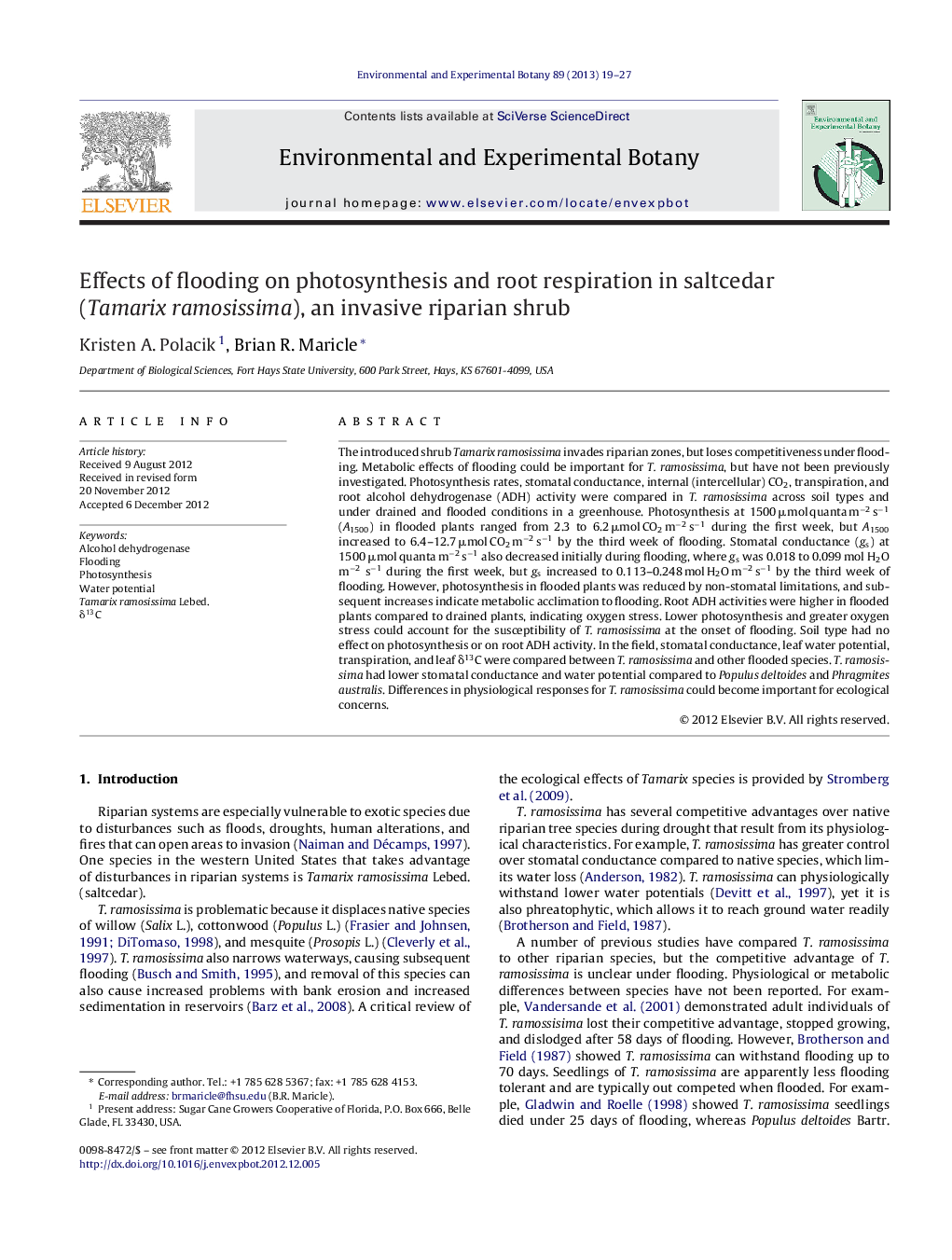| کد مقاله | کد نشریه | سال انتشار | مقاله انگلیسی | نسخه تمام متن |
|---|---|---|---|---|
| 4554536 | 1628088 | 2013 | 9 صفحه PDF | دانلود رایگان |

The introduced shrub Tamarix ramosissima invades riparian zones, but loses competitiveness under flooding. Metabolic effects of flooding could be important for T. ramosissima, but have not been previously investigated. Photosynthesis rates, stomatal conductance, internal (intercellular) CO2, transpiration, and root alcohol dehydrogenase (ADH) activity were compared in T. ramosissima across soil types and under drained and flooded conditions in a greenhouse. Photosynthesis at 1500 μmol quanta m−2 s−1 (A1500) in flooded plants ranged from 2.3 to 6.2 μmol CO2 m−2 s−1 during the first week, but A1500 increased to 6.4–12.7 μmol CO2 m−2 s−1 by the third week of flooding. Stomatal conductance (gs) at 1500 μmol quanta m−2 s−1 also decreased initially during flooding, where gs was 0.018 to 0.099 mol H2O m−2 s−1 during the first week, but gs increased to 0.113–0.248 mol H2O m−2 s−1 by the third week of flooding. However, photosynthesis in flooded plants was reduced by non-stomatal limitations, and subsequent increases indicate metabolic acclimation to flooding. Root ADH activities were higher in flooded plants compared to drained plants, indicating oxygen stress. Lower photosynthesis and greater oxygen stress could account for the susceptibility of T. ramosissima at the onset of flooding. Soil type had no effect on photosynthesis or on root ADH activity. In the field, stomatal conductance, leaf water potential, transpiration, and leaf δ13C were compared between T. ramosissima and other flooded species. T. ramosissima had lower stomatal conductance and water potential compared to Populus deltoides and Phragmites australis. Differences in physiological responses for T. ramosissima could become important for ecological concerns.
► Tamarix ramosissima is more flooding tolerant than previously realized.
► Photosynthesis in flooded T. ramosissima was reduced by non-stomatal limitations.
► Photosynthesis rates increased as plants became acclimated to flooding.
► Root ADH activities were higher in flooded plants compared to drained plants.
► T. ramosissima had lower gs and Ψ compared to P. deltoides and P. australis.
Journal: Environmental and Experimental Botany - Volume 89, May 2013, Pages 19–27